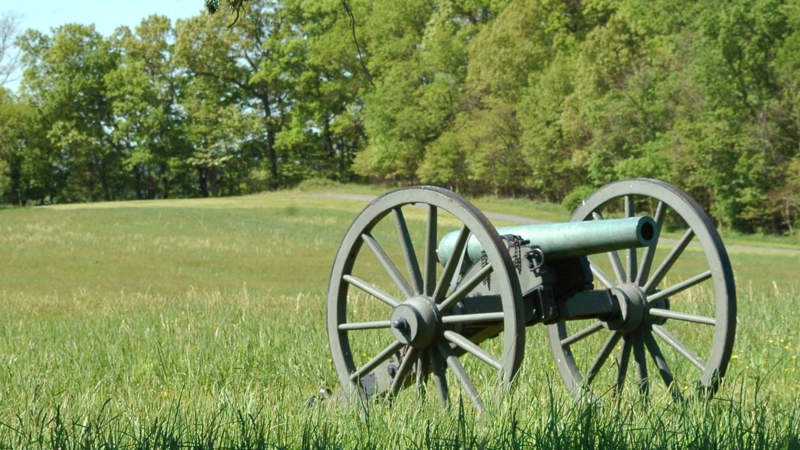Memorial to the Civil War
A jewel in the National Park Service’s eastern crown, the 3,500-acre Harpers Ferry National Historical Park includes hiking trails, Civil War battlefields, and the quaint historic district of Harpers Ferry. The armory occupied in 1859 by abolitionist and firebrand John Brown is open for tours, and travelers can walk Maryland Heights and Loudon Heights, on which the Battle of Harpers Ferry took place over four days in 1862. Civil War cannons dot skirmish lines throughout the park. Restored shops and businesses including taverns, a dry goods store, a boarding house, and a marshal’s office house exhibits and historic trade workshops. The original campus of Storer College, a historically black college operated between 1865 and 1955, is nestled into the woods overlooking the Shenandoah River. Ranger-led tours are available at several locations throughout the year.
Town History
The natural beauty of what would become Harpers Ferry was noted by future U.S. president Thomas Jefferson during his visit in 1783. Young George Washington noted the commercial utility of the area while surveying, and later purchasing, tracts of land along the Potomac River. Federal legislation in 1794 established a national armory in Harpers Ferry, and its output of rifles, tomahawks, and knives outfitted the Lewis and Clark expedition in 1803. Over the next forty years, the manufacturing of arms and ammunition put the town on the map. It was this armory that abolitionist John Brown raided in 1859 in an effort to organize a slave rebellion. When the federal government began to prioritize preserving places of national historic interest, Harpers Ferry was named a National Monument in 1944.
Visitor Information
Open year-round, Harpers Ferry National Historical Park sits at the confluence of the Shenandoah River and the Potomac River, and occupies parcels of land in West Virginia, Maryland, and Virginia. The C&O Canal Towpath cuts through the park from east to west, and the Appalachian Trail bisects it from north to south; both use a newly-rehabilitated bridge across the Potomac River. Parking for cars is scarce in the historic district, but available at a central lot that is served by a shuttle. Amtrak’s Floridian stops at the Harpers Ferry station. Winter, spring and fall are perfect for broad views and smaller crowds at this popular park.

